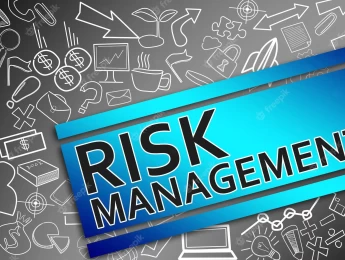- Table of Contents
- What is the role of the secretary correspondence?
- 1. Communication Management:
- 2. Record Keeping and Documentation:
- 3. Event Coordination:
- 4. Effective Communication:
- 5. Diplomacy and Tact:
- 6. Technological Adaptability:
- 7. Membership Engagement:
- 8. Challenges and Conflict Resolution:
- 9. Professional Development:
- 10. Time Management:
- 11. Collaborative Leadership:
- 12. Strategic Planning:
- 13. Crisis Communication:
- 14. Outreach and Public Relations:
- 15. Cultural Sensitivity:
- 16. Training and Development:
- 17. Legislative Compliance:
- 18. Feedback Mechanisms:
- 19. Success Metrics and Reporting:
- 20. Professional Ethics:
- Recording Secretary vs. Corresponding Secretary
- Recording Secretary: Capturing the Essence of Meetings
- 1. Responsibilities and Functions:
- 2. Precision and Attention to Detail:
- 3. Communication and Collaboration:
- 4. Legal Compliance and Formality:
- Corresponding Secretary: Nurturing Connections and Communication
- 1. Responsibilities and Functions:
- 2. Adaptability and Interpersonal Skills:
- 3. Proactivity in Communication:
- 4. Creativity and Promotion:
- Overlap and Synergy: Leveraging Both Roles for Success
- 1. Seamless Coordination:
- 2. Information Flow:
- 3. Comprehensive Documentation:
- 4. Unified Communication Strategy:
- Challenges Faced by Corresponding Secretaries
- Solutions and Best Practices
Introduction
In the intricate tapestry of organizational dynamics, the corresponding secretary emerges as a linchpin, weaving the threads of communication, collaboration, and strategic leadership. This pivotal role encompasses a diverse array of responsibilities, ranging from interdepartmental liaisons to event coordination and conflict resolution. As architects of effective communication, corresponding secretaries navigate the complexities of official correspondence, internal messaging, and the challenges posed by an ever-evolving digital landscape. Their adaptability and technological acumen position them as crucial contributors to organizational success. This article explores the multifaceted dimensions of the corresponding secretary's role, shedding light on the strategic mastery required to orchestrate a harmonious blend of communication excellence within the organizational symphony.
What is the role of the secretary correspondence?
The role of a corresponding secretary is multifaceted, encompassing a range of responsibilities vital for the effective functioning and communication within an organization. Below, I provide a detailed exploration of the key aspects of the corresponding secretary's role:
1. Communication Management:
- Interdepartmental Liaison: Corresponding secretaries act as conduits between different departments, ensuring that communication aligns with organizational goals. For example, in a non-profit, they may facilitate collaboration between the fundraising and program departments to ensure coherent messaging in donor communications.
- Timely Responses: Aiming for timely responses is not just about quick replies but also about setting expectations. Corresponding secretaries may establish communication protocols, such as acknowledging receipt of emails immediately and providing a timeframe for more detailed responses.
2. Record Keeping and Documentation:
- Meeting Minutes: Besides recording discussions, corresponding secretaries might also annotate key decisions and action items to create actionable agendas for future meetings. This proactive approach streamlines follow-up activities and ensures that organizational initiatives progress efficiently.
- Membership Databases: Beyond basic contact information, corresponding secretaries may categorize members based on their interests or expertise. This segmentation allows for targeted communication, ensuring that members receive information relevant to their preferences.
3. Event Coordination:
- Logistical Planning: In addition to logistics, corresponding secretaries may also play a role in negotiating contracts with vendors, leveraging their communication skills to secure favorable terms. This broader involvement enhances their contribution to the organization's overall efficiency and cost-effectiveness.
- Communication Campaigns: Crafting compelling messages involves storytelling. Corresponding secretaries can weave narratives that highlight the impact of events, emphasizing the organization's achievements or the positive experiences of past participants.
4. Effective Communication:
- Official Correspondence: Beyond clarity, corresponding secretaries may also focus on making messages relatable. They might incorporate personal anecdotes or success stories to humanize the organization and resonate with members.
- Internal Communication: Utilizing multiple channels, such as a dedicated intranet or communication platform, enhances internal communication. Corresponding secretaries may encourage interactive forums for discussions, ensuring a more dynamic and engaged membership.
5. Diplomacy and Tact:
- Conflict Resolution: Developing conflict resolution guidelines can be proactive. Corresponding secretaries may create a framework that encourages open dialogue and provides steps for resolving conflicts constructively, fostering a positive organizational culture.
- Sensitive Matters Handling: In handling sensitive issues, corresponding secretaries may implement a tiered approach, escalating matters only when necessary. This ensures that minor concerns are addressed promptly, while more complex issues receive appropriate attention.
6. Technological Adaptability:
- Digital Communication Tools: Besides mainstream tools, corresponding secretaries might explore emerging communication technologies. For example, experimenting with virtual reality or augmented reality for event promotions can demonstrate innovation and a commitment to staying at the forefront of communication trends.
- Data Security: Implementing encrypted communication channels and regularly updating cybersecurity protocols demonstrates a commitment to safeguarding sensitive information.
7. Membership Engagement:
- Regular Updates: Corresponding secretaries can personalize updates by segmenting communications based on member preferences. For instance, sending tailored newsletters to different interest groups ensures that members receive content aligned with their specific areas of interest.
- Feedback Channels: In addition to traditional surveys, corresponding secretaries might introduce interactive feedback sessions, such as virtual town hall meetings or webinars, allowing for real-time engagement and addressing concerns promptly.
8. Challenges and Conflict Resolution:
- Identifying Challenges: Proactively identifying challenges involves conducting periodic communication audits. Corresponding secretaries can analyze trends in member feedback, identify potential communication bottlenecks, and implement strategies to mitigate challenges before they escalate.
- Mediation Skills: Training members in conflict resolution can empower the entire organization. Corresponding secretaries might organize workshops or invite external experts to provide insights on effective conflict resolution strategies.
9. Professional Development:
- Continuous Learning: Corresponding secretaries can go beyond traditional training by fostering a culture of continuous learning. Encouraging knowledge-sharing sessions among members allows for collective growth and keeps the organization at the forefront of communication best practices.
- Networking: Actively participating in industry forums, both online and offline, enhances networking opportunities. Corresponding secretaries can share their experiences, learn from peers, and bring valuable insights back to the organization.
10. Time Management:
- Prioritization: Prioritizing tasks involves assessing the urgency and impact of each communication initiative. Corresponding secretaries might implement a project management system, allowing for efficient collaboration and task tracking among team members.
- Deadline Adherence: Implementing periodic performance reviews based on adherence to deadlines encourages a culture of accountability and punctuality within the communication team.
11. Collaborative Leadership:
- Communication Strategy Alignment: Corresponding secretaries can facilitate strategic alignment through regular leadership forums. These sessions provide an opportunity for leaders to discuss communication goals, share insights, and collectively shape the organization's communication strategy.
- Cross-Departmental Initiatives: Creating cross-functional project teams involving members from various departments fosters a sense of unity and shared responsibility, breaking down silos and enhancing overall communication effectiveness.
12. Strategic Planning:
- SWOT Analysis: Corresponding secretaries can conduct SWOT analyses collaboratively with members from different departments. This inclusive approach ensures diverse perspectives and generates comprehensive insights that inform robust communication strategies.
- Long-Term Vision: Integrating communication into the organization's long-term vision involves mapping communication milestones alongside broader organizational goals. This alignment ensures that communication efforts contribute directly to the organization's sustained success.
13. Crisis Communication:
- Preparedness Plans: Conducting simulated crisis scenarios allows corresponding secretaries to assess the effectiveness of preparedness plans. Regular drills help identify areas for improvement and refine crisis communication strategies.
- Transparent Communication: Implementing transparent communication during crises involves not only sharing updates but also actively seeking input from members on potential solutions. This inclusive approach can enhance the organization's resilience during challenging times.
14. Outreach and Public Relations:
- Media Engagement: Corresponding secretaries can leverage social media influencers or ambassadors among their membership to amplify the organization's reach. This grassroots approach adds authenticity to the organization's public relations efforts.
- Sponsorship Communication: Establishing a dedicated sponsorship communication plan ensures that sponsors receive regular updates on the impact of their contributions. This transparency strengthens the organization's relationship with sponsors and encourages long-term partnerships.
15. Cultural Sensitivity:
- Diverse Communication Strategies: Beyond language considerations, corresponding secretaries can implement cultural sensitivity training for the entire organization. This fosters an inclusive environment where members appreciate and respect diverse perspectives.
- Language Sensitivity: When communicating in multiple languages, corresponding secretaries might employ translation services to ensure accurate and culturally appropriate messaging. This attention to detail demonstrates a commitment to inclusivity.
16. Training and Development:
- Workshop Facilitation: Corresponding secretaries can invite external experts to facilitate workshops, bringing fresh insights and diverse perspectives. This approach enriches the learning experience for members and enhances the impact of training initiatives.
- Resource Provision: Providing a repository of communication resources, such as templates, style guides, and case studies, empowers members to apply best practices in their individual communication roles.
17. Legislative Compliance:
- Legal Awareness: Regular legal briefings and updates can keep members informed about evolving legislation related to communication. Corresponding secretaries can collaborate with legal experts to provide clear guidelines on compliance.
- Policy Implementation: In addition to policy creation, corresponding secretaries might conduct periodic policy reviews, ensuring that communication practices remain aligned with the latest legal requirements and industry standards.
18. Feedback Mechanisms:
- Survey Implementation: Combining quantitative surveys with qualitative interviews or focus groups provides a more comprehensive understanding of member perspectives. This mixed-methods approach enriches the feedback analysis process.
- Feedback Analysis: Establishing a dedicated feedback analysis team ensures that insights gathered from surveys are systematically reviewed and integrated into future communication strategies.
19. Success Metrics and Reporting:
- Key Performance Indicators (KPIs): Corresponding secretaries can collaborate with data analytics specialists to implement advanced analytics tools. This enables a more granular analysis of KPIs, offering nuanced insights into member behavior and communication effectiveness.
- Regular Reporting: Beyond static reports, corresponding secretaries might explore dynamicreporting dashboards that provide real-time visibility into communication metrics. This dynamic approach facilitates proactive decision-making and adjustments to communication strategies.
20. Professional Ethics:
- Confidentiality: Beyond policy implementation, corresponding secretaries can organize periodic ethics workshops for all members. These sessions reinforce the importance of maintaining confidentiality and ethical communication practices.
- Ethical Decision-Making: Encouraging members to participate in ethical dilemma discussions fosters a culture of shared values. These discussions provide practical insights into navigating complex ethical scenarios, ensuring that members are well-equipped to make ethical decisions in their communication roles.
Expanding on each aspect of the corresponding secretary's role reveals the intricate details and considerations involved. By embracing innovative approaches, continuous learning, and a commitment to ethical standards, corresponding secretaries can elevate their impact, contributing significantly to the organization's communication prowess and overall success.
Recording Secretary vs. Corresponding Secretary
In the intricate tapestry of organizational structure, the roles of recording secretary and corresponding secretary stand as distinct threads, each weaving a crucial part of the narrative. While their titles might sound similar, the nuances of their responsibilities, functions, and contributions set them apart. Let's unravel the layers of these roles to understand the unique contributions each secretary makes to the smooth functioning and effective communication within an organization.
Recording Secretary: Capturing the Essence of Meetings
1. Responsibilities and Functions:
- Meeting Documentation: The recording secretary is the custodian of accurate meeting records. This involves diligently recording minutes, documenting discussions, decisions, and action items during organizational meetings.
- Official Record Keeper: They maintain an organized archive of meeting minutes, resolutions, and other pertinent documents. This role contributes to the historical record of the organization's decisions and actions.
- Meeting Preparation: The recording secretary collaborates with the chairperson or leadership to prepare the meeting agenda, ensuring that it aligns with the organization's objectives and priorities.
2. Precision and Attention to Detail:
- Accuracy is Paramount: The recording secretary must possess a keen eye for detail to capture discussions accurately. Minute discrepancies can have significant implications for organizational decisions and actions.
- Timeline Awareness: Timeliness is crucial. Recording secretaries must provide draft minutes promptly after meetings to facilitate swift decision-making and action item implementation.
3. Communication and Collaboration:
- Coordination with Leadership: Effective communication with organizational leaders is essential. Recording secretaries may consult with the chairperson or committee heads to ensure accurate representation of discussions and decisions.
- Distribution of Minutes: Distributing finalized minutes to members ensures transparency and provides a reference for future actions and decisions.
4. Legal Compliance and Formality:
- Meeting Protocols: Recording secretaries often guide the organization in adhering to meeting protocols, ensuring compliance with legal and procedural requirements.
- Meeting Formalities: They assist in maintaining a structured and formal atmosphere during meetings, following established rules of order and parliamentary procedures.
Corresponding Secretary: Nurturing Connections and Communication
1. Responsibilities and Functions:
- External Communication: Corresponding secretaries focus on external communication, managing interactions with individuals or entities outside the organization. This includes responding to inquiries, addressing external communications, and representing the organization in a positive light.
- Membership Communication: They play a vital role in maintaining transparent communication with the organization's members. This involves sharing updates, disseminating information, and addressing member concerns.
- Event Coordination: Corresponding secretaries often take charge of coordinating events, managing invitations, and ensuring effective communication before, during, and after organizational gatherings.
2. Adaptability and Interpersonal Skills:
- Dynamic Communication: Corresponding secretaries need to adapt their communication style to various audiences, from formal correspondences with external entities to more casual interactions with members.
- Interpersonal Sensitivity: Building and maintaining positive relationships is crucial. Corresponding secretaries often serve as the face of the organization, requiring strong interpersonal skills to navigate diverse interactions.
3. Proactivity in Communication:
- Anticipating Needs: A corresponding secretary must be proactive in anticipating communication needs. This includes predicting potential queries, addressing concerns before they escalate, and staying ahead of information dissemination.
- Responsive Communication: Timely responses to inquiries, whether from members or external parties, contribute to the organization's reputation and member satisfaction.
4. Creativity and Promotion:
- Creative Communication: Corresponding secretaries often engage in creative communication strategies. This can involve crafting compelling messages, designing newsletters, or utilizing social media to enhance the organization's visibility.
- Promotional Initiatives: They may actively contribute to promotional activities, showcasing the organization's achievements, events, and initiatives to both members and the broader community.
Table 1: Comparison between Recording Secretary vs. Corresponding Secretary
Aspect | Recording Secretary | Corresponding Secretary |
Responsibilities and Functions | Custodian of meeting records, document discussions, decisions, and action items. Official record keeper with an organized archive. Collaborates in meeting agenda preparation. | Focuses on external communication, managing interactions with entities outside the organization. Maintains transparent communication with members and coordinates events. |
Precision and Attention to Detail | Must possess a keen eye for detail to capture discussions accurately. Timeliness in providing draft minutes is crucial. | Requires adaptability and interpersonal skills to navigate various audiences. Proactive in anticipating communication needs and responsive to inquiries. |
Communication and Collaboration | Effectively communicates with organizational leaders, ensuring accurate representation of discussions. Distributes finalized minutes to members for transparency. | Engages in creative communication strategies, crafting compelling messages, and utilizing social media. Actively contributes to promotional activities. |
Legal Compliance and Formality | Guides the organization in adhering to meeting protocols and ensures compliance with legal requirements. Assists in maintaining a structured and formal atmosphere during meetings. | Focuses on adaptability, anticipating communication needs, and maintaining positive relationships. Engages in creative communication strategies and contributes to promotional activities. |
Overlap and Synergy: Leveraging Both Roles for Success
While recording and corresponding secretaries have distinct roles, there exists a natural synergy between their functions. Successful organizations often leverage this synergy to enhance overall efficiency and communication effectiveness.
1. Seamless Coordination:
- Collaborative Planning: Both secretaries may collaborate in planning events and meetings. The recording secretary ensures proper documentation of discussions, while the corresponding secretary ensures effective communication before, during, and after the event.
- Shared Agendas: Aligning meeting agendas with external communication plans ensures a cohesive narrative both within and outside the organization.
2. Information Flow:
- Feedback Loops: Regular communication between recording and corresponding secretaries establishes a feedback loop. Insights from recorded minutes can inform external communications, and member feedback received by the corresponding secretary can contribute to meeting discussions.
3. Comprehensive Documentation:
- Holistic Records: The collaboration between both secretaries contributes to a comprehensive organizational record. Meeting minutes provide an internal historical perspective, while external communications offer a snapshot of the organization's engagements and commitments.
4. Unified Communication Strategy:
- Strategic Alignment: Both secretaries play a crucial role in strategic communication. Their collaboration ensures that internal and external communications align with the organization's overarching goals and messaging.
In essence, the recording secretary meticulously captures the formalities and decisions made within the organization's walls, while the corresponding secretary extends the organization's voice beyond those walls, nurturing relationships and maintaining a positive external image. The success of an organization often hinges on the seamless integration of these roles, recognizing the unique strengths each brings to the table. Together, they form a dynamic duo, orchestrating harmony in the intricate symphony of organizational life.
Challenges Faced by Corresponding Secretaries
- Miscommunication
- Challenge: Miscommunication can stem from varied interpretations of messages, language differences, or disparities in communication styles.
- Impact: The repercussions of miscommunication may include project delays, diminished member trust, and a strained organizational culture.
- Example: An ambiguous email announcement about an upcoming event might lead to confusion among members regarding the date, venue, or registration process.
- Handling Conflicts
- Challenge: Conflicts arise due to differing opinions, personal misunderstandings, or competition for resources or recognition.
- Impact: Unresolved conflicts can create factions within the organization, hindering collaboration and affecting overall productivity.
- Example: Disagreements among committee members regarding decision-making authority for an event might escalate, leading to a tense working environment.
- Managing a Large Volume of Correspondence
- Challenge: Corresponding secretaries often face an overwhelming influx of emails, messages, and notifications, making it challenging to stay organized and respond promptly.
- Impact: Delays in responding to member inquiries or processing critical information can result in missed opportunities and decreased member satisfaction.
- Example: A surge in membership inquiries during a promotional campaign might lead to delayed responses, potentially causing prospective members to lose interest.
Solutions and Best Practices
- Clear Communication Guidelines:
- Solution: Develop and disseminate clear communication guidelines that outline expectations for tone, formatting, and response times.
- Best Practice: Include examples of effective communication in the guidelines to provide tangible references for members to follow.
- Conflict Resolution Framework:
- Solution: Establish a structured conflict resolution framework that encourages open communication, active listening, and mediation.
- Best Practice: Conduct periodic workshops on conflict resolution techniques, equipping members with the skills to navigate disagreements constructively.
- Automation and Categorization:
- Solution: Implement automation tools to categorize and prioritize incoming correspondence, ensuring that urgent matters are addressed promptly.
- Best Practice: Regularly review and update automation rules to adapt to evolving communication patterns and requirements.
- Effective Time Management:
- Solution: Prioritize tasks using time management techniques such as the Pomodoro Technique or the Time Blocking method.
- Best Practice: Set aside dedicated time slots for specific communication-related tasks, allowing for focused and efficient work.
- Centralized Communication Hub:
- Solution: Establish a centralized platform or intranet where members can access important updates, documents, and communication resources.
- Best Practice: Designate a communication hub administrator responsible for updating and curating content to ensure relevance and accuracy.
- Regular Training on Communication Tools:
- Solution: Conduct regular training sessions on the effective use of communication tools and platforms.
- Best Practice: Create a knowledge-sharing culture where members can share tips and best practices for optimizing communication tools.
- Delegate and Empower:
- Solution: Delegate specific communication responsibilities to team members, empowering them to take ownership of their roles.
- Best Practice: Foster a sense of accountability by recognizing and celebrating the achievements of individuals or subcommittees responsible for specific communication tasks.
- Feedback Mechanisms:
- Solution: Implement multiple channels for feedback, such as surveys, suggestion boxes, or regular feedback sessions.
- Best Practice: Periodically analyze feedback data and use it to inform improvements in communication processes and address emerging challenges.
- Effective Use of Templates:
- Solution: Develop a repository of standardized templates for various types of communication, ensuring consistency and saving time.
- Best Practice: Encourage members to provide feedback on the usability and effectiveness of templates, iterating on them based on user input.
- Regular Check-ins and Evaluation:
- Solution: Schedule regular check-in meetings to assess the effectiveness of current communication strategies and identify areas for improvement.
- Best Practice: Conduct thorough evaluations of communication processes at key milestones, integrating feedback from both internal and external stakeholders.
- Time-Blocking Strategies:
- Crisis Communication Plan:
- Solution: Develop a comprehensive crisis communication plan that outlines roles, responsibilities, and communication protocols during emergencies.
- Best Practice: Conduct regular tabletop exercises or simulations to test the effectiveness of the crisis communication plan and identify areas for improvement.
- Regular Training on Crisis Communication:
- Solution: Provide ongoing training on crisis communication to ensure that all members are familiar with emergency protocols.
- Best Practice: Include scenario-based training sessions that simulate various crisis situations, allowing members to practice their response strategies in a controlled environment.
- Inclusive Decision-Making Processes:
- Solution: Foster an inclusive decision-making culture where all members have a voice in major communication-related decisions.
- Best Practice: Establish cross-functional committees or involve representatives from various departments in decision-making processes to ensure diverse perspectives are considered.
- Proactive Member Engagement:
- Solution: Implement proactive member engagement strategies, such as personalized communications, surveys, and feedback sessions.
- Best Practice: Regularly assess member engagement metrics and tailor communication strategies based on the preferences and needs of the membership.
- Continuous Professional Development:
- Solution: Encourage and support corresponding secretaries in pursuing continuous professional development opportunities.
- Best Practice: Establish a budget for training and development, allowing corresponding secretaries to attend relevant workshops, conferences, or courses to stay updated on communication trends and best practices.
- Flexibility and Adaptability:
- Solution: Foster a culture of flexibility and adaptability, allowing for agile responses to changing communication needs.
- Best Practice: Conduct regular reviews of communication processes to identify areas for adjustment based on evolving organizational goals and external factors.
- Regular Audits and Assessments:
- Solution: Conduct regular audits of communication processes to identify inefficiencies and areas for improvement.
- Best Practice: Collaborate with external experts or consultants to perform comprehensive assessments of communication strategies, providing an unbiased perspective on effectiveness.
- Celebrating Communication Successes:
- Solution: Acknowledge and celebrate successful communication initiatives, recognizing the efforts of the corresponding secretary and the entire communication team.
- Best Practice: Showcase success stories in internal newsletters or meetings, fostering a positive and motivated communication culture within the organization.
- Community Building Initiatives:
- Solution: Implement community-building initiatives that strengthen relationships among members and enhance the overall organizational culture.
- Best Practice: Organize social events, virtual meetups, or team-building activities to create a sense of camaraderie and collaboration among members, positively impacting communication dynamics.
Addressing the challenges faced by corresponding secretaries requires a multifaceted approach encompassing clear guidelines, ongoing training, effective use of technology, and a commitment to continuous improvement. By implementing these solutions and best practices, corresponding secretaries can navigate their roles more effectively, fostering a positive communication environment within the organization.
Conclusion
In conclusion, the corresponding secretary, wielding mastery in communication and strategic leadership, serves as the orchestrator of organizational excellence. Navigating intricacies from interdepartmental collaborations to event coordination, their adaptability shapes a robust communication ecosystem. Addressing challenges with clear communication guidelines, conflict resolution frameworks, and strategic engagement, corresponding secretaries transform members into active participants, elevating satisfaction. Collaborating seamlessly with recording secretaries, they align events, information flow, and unified communication strategies, contributing significantly to organizational success. As conductors of an organizational symphony, corresponding secretaries, through innovation, continuous learning, and ethical standards, ensure every note resonates with precision and adaptability. Ready to embark on a journey of professional growth? Enroll in our "Personal Assistant & Secretarial Training" course today for comprehensive skills development and unlock new horizons in your career!

























